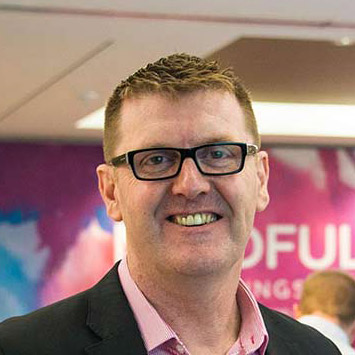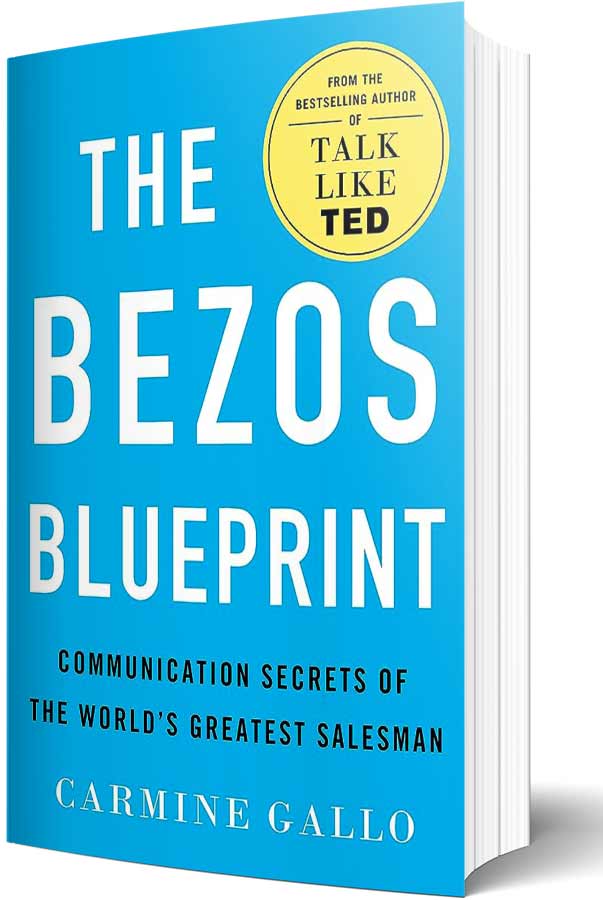The Bezos Blueprint
Lessons from Jeff Bezos, the World's Richest Man, and the Founder of Amazon
Whether you love, loath or are indifferent to Jeff Bezos the founder of Amazon, I highly recommend you read The Bezos Blueprint. Why? Because it is written by Carmine Gallo who I believe is one of the best global communication coaches and leadership author’s around.
Gallo is a Harvard instructor, keynote speaker and columnist who specialises in helping leaders and organisations improve and transform their communication skills.
Gallo has also authored several books on communication and public speaking. Two of my favourite Gallo books are, “Talk Like TED” and “The Presentation Secrets of Steve Jobs”. Both are amazing, especially if you want to work on becoming a more compelling and engaging communicator.
His latest book The Bezos Blueprint is a comprehensive and insightful guide into the workings and leadership style of Jeff Bezos, the founder of Amazon.
Gallo is fascinated by Jeff Bezos. Not because he one of the richest and most successful businessmen in the world, where he created a scalable model that grew from a small team in a Seattle garage, to one of the world’s largest employers. But because Bezos is now considered the ‘Master of Communication’ along with his passion for writing, storytelling and creating memorable metaphors.
This book is partly an in-depth analysis of Bezos’ innovative approach to business and the strategies that he used to build Amazon into the world’s largest online retailer. However it is mostly a discovery in how Bezos transformed his leadership style with the way that he communicates internally at Amazon, and also to his shareholders.
Gallo deconstructs 24 years of Bezos’ letters to shareholders, revealing the writing and communication strategies evolved to cut-through with persuasive stories that enable action.
Gallo’s book has sixteen chapters and is divided into three parts:
- Set The Foundations. Here you learn how to write with simplicity and clarity. How you can harness the power of the written word, while using persuasive metaphors that stick.
- Build The Story Structure. Here Gallo examines how Bezos learnt to build memorable stories using the classic ‘Three-Act Structure’ that moves readers and listeners into action.
- Deliver The Plan. Gallo shares how Bezos developed into the role of ‘Repeater in Chief’ where he delivers his messages to build a team of inspired ‘Missionaries’.
Keep It Simple
Central to everything about Bezos’ communication is simplicity.
Gallo shares how Bezos was not born a great presenter. In fact, in the early days of Amazon, Bezos was not a natural or polished speaker, and his presentations were often described as “awkward and nervous”.
However, through determination and hard work, Bezos has continually evolved and grown to become a great communicator. Below are a few of my favourite concepts from Gallo’s insights into the power of the Bezos communication approach.
Simple Is The New Superpower
“When you simplify complex topics, you’re not dumbing down the content. You’re outsmarting the competition.”
Use short words to talk about hard things.
Bezos insisted that all reports have to be ‘narratively-written memos’ that are concise, clear, and well-structured. He rejected all convoluted documents until his senior leaders realised that Bezos would only accept ‘one page’ reports, that are easy to read and understand.
This became a hallmark of Amazon’s corporate culture that is credited with promoting better decision-making, fostering a culture of writing and improving the quality of discussions and decisions.
Make Mission Your Mantra
Gallo describes what Bezos does incredibly well is keeping the company’s mission centre stage. Leaders need to identify the company’s driving purpose or mission and don’t let anyone forget it. ‘Repeat it early and often. When you get tired of it, repeat it again’.
Become a ‘Learn It All’
One of Bezos’ most important principles is Learn and Be Curious. His mantra is always learning – always improving. Where successful leaders are ‘Learn It All’s’, not Know It All’s!
Metaphors That Stick
Gallo compellingly argues that Bezos ‘Mastered the Metaphor’. For example, Jeff Bezos named his company Amazon after the Earth’s biggest river. Although his early start-up only sold books, Bezos knew that if books took off, they could sell anything. Earth’s biggest river was a metaphor for Earth’s biggest selection of products.
Bezos become obsessed with effective storytelling, especially as metaphors in communication. He understood that compelling narratives (not data) would always inspire and motivate people.
Below are a few more examples of my favourite metaphors from the Bezos Blueprint:
Day One Metaphor
“Jeff Bezos ran Amazon for 9,863 days, but he always showed up to work on day one.”
• Bezos is famous for his focus on maintaining a ‘Day One’ mentality across Amazon. This metaphor essentially means approaching each day with the same sense of urgency, innovation, and customer obsession that a start-up would have on its first day of existence. Bezos is famous for saying, “The key to success is to focus obsessively on the customer and not on the competition.”
Two-Pizza Teams Metaphor
“Most of the important work we do at Amazon is accomplished by teams, and the teams are typically small enough so that we can feed them with two pizzas.”
• Internally Bezos used the ‘Two-Pizza Team’ approach at Amazon. This metaphor helps keep teams small enough that they can be fed with only two pizzas. In other words, small, nimble, and efficient teams that can communicate and collaborate effectively without unnecessary bureaucracy.
Putting The Customer
In The Driver’s Seat Metaphor
“We see our customers as invited guests to a party, and we are the hosts. It’s our job every day to make every important aspect of the customer experience a little bit better.”
• By placing the customer in the driver’s seat, the business acknowledges that it is the customer’s needs, preferences and experiences that ultimately guide the direction and success of the organisation. This metaphor goes beyond just providing good customer service. It involves a deep commitment to putting the customer at the centre of all decision-making processes.
Side note – Bezos has an empty chair in meetings to symbolise the one person not in the room but the most important person to consider – the customer.
Great Communicators
are Not Born But Created
Bezos’ dedication to improving his communication skills played a significant role in shaping Amazon’s image and its success as a customer-centric, innovative and forward-thinking company. Gallo argues that his transformation as a communicator is the driving force behind Amazon’s success and a compelling example how leaders can evolve and grow in their presentation abilities over time.
So much so that former ‘Amazonians’ who worked directly with Bezos have adopted his communication tools and models as blueprints to start their own companies.
The Bezos Blueprint is a must-read for anyone interested in entrepreneurship, innovation and leadership. It offers a fascinating and insightful look at one of the most successful and influential business leaders of our time. It provides practical lessons and strategies that can be applied by anyone looking to master the art and science of becoming a great communicator.
Another highly recommended read by Gallo. Can’t wait for his next book.
“What I want to talk to you about today is the difference between gifts and choices. Cleverness is a gift; kindness is a choice. Gifts are easy – they’re given after all. Choices can be hard. In the end, we are our choices.”
Bezos speech to the Princeton class of 2010.

Book review by:
Richard Dore - CEO, Proteus Leadership


